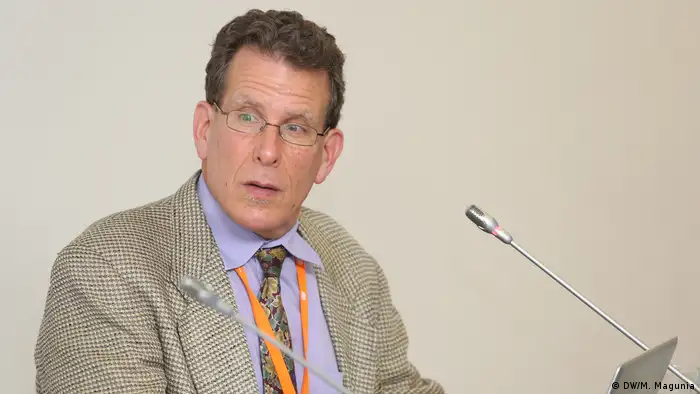GMF
Mission Impossible?: Reporting on inequalities while maintaining objectivity
Social Accountability Media Initiative's Thomas Lansner on what the media can do to amplify voices that have been oppressed and "not forgetting the human face of the problem"
Thomas Lansner is the Director of the Social Accountability Media Initiative (SAMI), a project of theAga Khan University Graduate School of Media and Communications in Nairobi. SAMI's aim is to enhance advocacy communications skills for civil society organizations and the communities they serve. The Social Accountability Media Initiative will be hosting a panel at this year's Global Media Forum on the practical challenges that may help or hinder efforts to expand media coverage of inequality and social accountability issues.
What can the media do to raise up voices that have traditionally been oppressed? How can the media balance reporting on inequalities while maintaining its objectivity and neutrality?
Voices of the poor and repressed are too rarely seen in most media. And this is because media are nearly never (and really cannot be), “objective” and very often cover matters of social justice badly because of a perception that “media standards” need to be “neutral”.
The very act of choosing to cover issues of inequality is a values-based decision for media. It is saying, “This is important to our society”. Offering voice to people suffering most from problems and policies related to inequality should be standard practice for full and fair coverage. Being an “ally” does not necessarily mean becoming an advocate. But it requires moving away from “neutrality” to describe not only reality on the ground, but to explain the mechanisms of society and governance that create, sustain, and could promote social justice.
Civil society organizations (CSOs) should be natural allies for media. CSOs often have far reach and expertise among marginalized groups. For example, the Social Accountability Media Initiative [SAMI] seeks to build collaborations to help raise the voices of people directly affected by inequalities. But we cannot ask media to act merely as a mouthpiece for any group; it is best for media workers to see and assess situations for themselves. Media can build trust through CSO collaborations, but must always verify, as well.
In your experience, what are some of the practical challenges that hinder efforts to expand media coverage of inequality?
In many countries, people suffering from the practical impact of inequalities are society’s least powerful: those lacking economic and political clout to make their voices heard. They are also often in the countryside, or in urban areas that might be dangerous to access. Resources for journalists to cover these issues are sometimes lacking; even a day trip to a rural area is costly to media outlets on tight budgets. And the poor are also not a prime market for advertisers. Coverage of issues of concern to wealthier urban groups draws the audiences advertisers desire. Another challenge can be lack of expertise among journalists that allows the narratives of the most dominant (and “information-and media-rich”) groups to prevail.
Why is it important to amplify the voices and provide media training for communities which have been marginalized?
The most marginalized groups often have the fewest resources to make their voices heard in political and economic circles, and to offer their perspectives on policies and practices that affect them very directly. Media training empowers people to offer their own stories, and often very practical information, to their own communities, and beyond. Local and community media can raise awareness of issues, and mobilize people to work to address them. The Social Accountability Media Initiative helps build skills among CSOs, grassroots community-based groups, and media to better listen to and tell the stories of real people affected by inequality and issues around governance, transparency, and service delivery. The “human face” of these challenges is a crucial part of raising awareness and promoting action.
Can you speak to how solutions journalism relates to your work?
“Solutions journalism” is in fact good journalism, and moves beyond mere description of a problem. Reporting that only describes a problem is usually shallow, and distances audiences who might perceive that “nothing can be done”. Solutions journalism is not advocacy, however. It must carefully assess evidence, from experts and data, to highlight the most effective responses. And solutions journalism never forgets the human face of the problem; what do real people affected by an issue suggest?
This interview has been condensed.
- Date 26.10.2018
- Feedback: Send us your feedback.
- Print Print this page
- Permalink https://p.dw.com/p/2xSLp
- Date 26.10.2018
- Send us your feedback.
- Print Print this page
- Permalink https://p.dw.com/p/2xSLp


